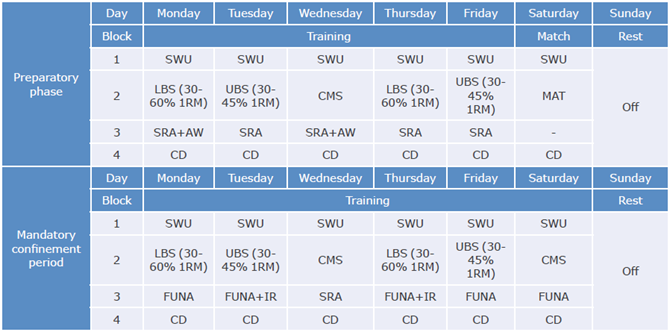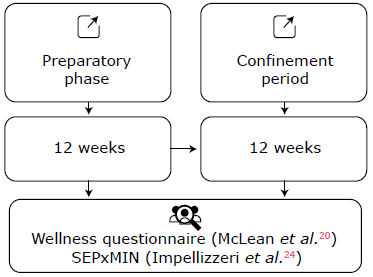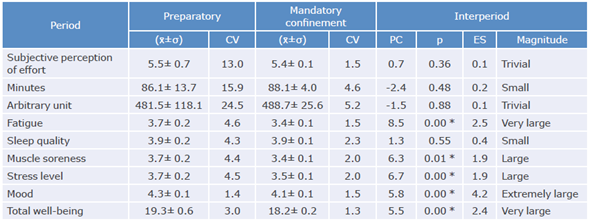Introduction
In December 2019, in the city of Wuhan, China, some cases of pneumonia associated with a new strain of coronavirus were reported.1,2 This virus, known as SARS-CoV-2, spread rapidly throughout the country and then around the world.3,4 The Asian country's public health agencies and the scientific community quickly established the viral gene sequence and shared it with the rest of countries.5,6 Then, in February 2020, the World Health Organization named the disease caused by this new coronavirus COVID-19.7
Because of the rapid spread of SARS-CoV-2 worldwide, and based on China's experience, mandatory lockdowns were considered an effective strategy to considerably reduce the number of infections,8 so many countries implemented it in their territories.
In Chile, on February 5, 2020, the national government decreed a health alert and implemented progressive measures including sectoral mandatory quarantines, cordons sanitaires, custom controls on goods, and curfews. The following month, the Ministry of Health announced the closure of cinemas and restaurants and the suspension of all sporting activities,9 including professional and amateur soccer leagues.10 Because of these measures, soccer players had to stay in their homes in compulsory lockdown according to health standards11 and, consequently, clubs, through their coaching staff, had to implement new communication strategies with their players through remote methods to conduct training aimed at maintaining their physical condition.11,12 Although this new methodology helped soccer players to remain physically active,13 detraining was evident when they resumed their activities.14
Currently, it is difficult to predict the duration of the pandemic by COVID-19;12 however, it is possible to determine the loss of physical fitness gained through traditional training15,16 taking into account that the prolonged decrease or deprivation of exercise may lead to psychophysiological changes.17 It should also be borne in mind that although sportspeople throughout their lives develop some capacity to deal with their emotions when facing competitive pressures and stress,18 during confinement, they are exposed to high levels of stress, anxiety and depressive symptoms product of the uncertainty generated by the health emergency, which bring with it short and long-term affectations in physical condition, performance and sleep quality (SQ).11,19 This situation raises the need to monitor physical and emotional aspects in sportspeople.12
One of the most widely used methodologies for learning about the physical and emotional effects induced by training in different periods is wellness and training load questionnaires,20-24 which involves variables such as subjective effort perception (SEP), training volume expressed in minutes (MIN), and training load as a product of SEPxMIN and expressed as arbitrary unit (AU).22 These variables allow quantifying the differences between the pre-pandemic period and the confinement period25 in order to establish, based on the results, the strategies or measures to be applied to make sportspeople recover their condition quickly.26 Both the SEP and training volume have been proven to be sensitive to fluctuations in the training load in soccer players during competitive periods,27 so they may also be useful for collecting information during the confinement period.11
Women's soccer has gained tremendous popularity because, in recent years, it has had significant growth, so much so that, currently, 73% of soccer associations around the world have an active women's national team.28 In South America, women's soccer is also growing and has achieved the active participation of more than 20 000 players throughout the region in the under 17, under 20 and adult categories.28 In this way, the high level of professionalization and success of female soccer players is evident,29 and one of the main objectives in this field is to optimize performance and well-being.30 However, due to the scant information on elite female athletes, it is a challenge to integrate evidence-based models in research into soccer players' performance.30 In this context, the present study aimed to determine the effects of COVID-19 confinement measures on the training load and the level of well-being of female professional soccer players in Chile.
Materials and methods
Population and type of study
A cross-sectional, exploratory-descriptive study with a quantitative approach was carried out in 32 players of the Chilean Women's Soccer Team. The participants had a mean age, height, weight, and experience time of 26±4 years, 1.65±0.08m, 62.3±4.5kg and 7.0±4.5 years, respectively. The sample was purposefully selected and players who had participated regularly in the two training periods were included.
Procedures
Participants' level of well-being and training load were assessed for 2 consecutive 12-week periods: playoff preparatory phase for the Olympic Games between December 12, 2019, and March 10, 2020, and mandatory confinement period between March 16 and June 7, 2020. The level of well-being was measured through a questionnaire proposed by McLean et al.20 and designed based on the recommendations of Hooper et al.23 In turn, training load was determined using the SEP scale21 and the training volume expressed in minutes (MIN), where load, as a product of SEPxMIN, was expressed as AU.22 The wellness questionnaire was applied before each training, and the SEP scale after it was completed. Data were collected daily through a Google form enabled for the players to fill it using their cell phones, tablets, or computers. The evaluated periods are presented below (Figure 1).
Instruments
The wellness questionnaire used assessed participants' perceived fatigue (FT), SQ, muscle soreness (MS), stress level (SL), and mood (MO), and each variable was measured on a Likert scale with 5 response levels, with 5 being the maximum welfare state level, and 1 the lowest. This questionnaire also considered the total welfare (TW) variable, which was obtained by adding up the scores of each of the proposed criteria,31 being 25 the maximum score.
On the other hand, the SEP scale evaluated effort perception by measuring intensity level perception of the activity carried out also using a Likert scale of 11 levels, where 0 represented nothing at all, 1-very weak, 2-weak, 3-moderate, 4-moderate to strong, 5-strong, 6-strong to very strong, 7-very strong, 8-strong to almost maximum, 9-almost maximum, and 10-maximum.
Intervention
During the preparatory phase, the training program consisted of 5 days of training, 1 day of official match, and 1 day of rest per week. Each training session lasted approximately 90 minutes and was divided into 4 blocks:
Standardized warm-up: This block included general exercises such as jogging, multidirectional movements, and dynamic stretching (10 minutes).
Strength: In this block, specific strength activities were performed for three large muscle groups: i) core muscles (CMS), with dynamic and isometric contraction exercises; ii) lower body (LBS), with squats, deadlift, and pelvic tilt at an intensity of 30-60% of 1 repetition maximum (1RM), and (iii) upper body (UBS), with flat bench dumbbell press, Russian belt tractions, and medicine ball rotations at an intensity of 30-45% of 1RM. The loads for all exercises were defined based on the mean propulsive velocity evaluated with a Chronojump® linear transducer (20 minutes).
Training: This block included soccer-related activities such as technical-tactical actions, match planning, set pieces, and soccer games in varying dimensions (40 minutes). Likewise, twice a week, aerobic work was carried out by means of fractional and intermittent runs at an intensity of 90-120% of the final speed achieved in the Yo-Yo intermittent recovery test level 132 (10 minutes).
Cooling down: In this block, passive stretching exercises of 15 to 20 seconds were performed per muscle group (10 minutes).
On the other hand, the training program during the mandatory confinement period consisted of 6 days of training and 1 day of rest. Like the preparatory phase, each training session lasted approximately 90 minutes and was divided into the same 4 blocks:
Standardized warm-up: This block included general exercises, multidirectional movements, and dynamic stretching (10 minutes).
Strength: In this block, the same activities performed during the preparatory phase were carried out, the only difference being duration (30 minutes).
Training: Functional activities were performed in this block, including coordination exercises, with and without ball, and remote-directed classes. Likewise, twice a week, intermittent 20-meter runs, organized according to the space that the players had available in their homes, were carried out at an intensity of 100-120% of the final speed (40 minutes).
Cooling down: In this block, stretching exercises of 15 to 20 seconds were performed per muscle group (10 minutes).
General information on the models used and the distribution of loads and assessments for each period evaluated is summarized in Table 1.
Table 1 Microcycle training models for the preparatory and mandatory confinement periods.

SWU: standardized warm-up; LBS: lower body strength; UBS: upper body strength; CMS: core muscle strength; AW: aerobic work; SRA: soccer-related activities; MAT: match; FUNA: functional activities; IR: intermittent running; CD: cool down.
Source: Own elaboration.
Statistical analysis
Data were analyzed using descriptive statistics, so the mean, standard deviations and coefficients of variation were obtained for each of the studied variables. The normality of the data was checked through the Shapiro-Wilk test, while the Wilcoxon signed-rank test was used to determine whether there were statistically significant differences between the two periods. All statistical analyzes were carried out using the software IBM® SPSS® statistics version 24.0, taking into account p<0.05 as significance value. Moreover, Cohen's d was used to calculate effect size (ES) to quantify changes in both periods.33 To compare ES differences, the following thresholds were used: 0.1, 0.2, 0.6, 1.2, 2.0 and 4.0 for trivial, small, moderate, large, very large and extremely large, respectively.34
Ethical considerations
The study took into account the ethical principles for medical research in human beings established in the 2013 Declaration of Helsinki.35 Since the intervention performed was not invasive and did not pose any risk to participants, the study was not submitted for approval by an institutional ethics committee. The participants' informed consent was obtained to collect the data after explaining the objectives, benefits, and risks of the research through online meetings.
Results
Table 2 presents the results of statistical and inferential analyses of the variables in both periods studied. The descriptive statistics for each variable are presented through mean and standard deviation, while absolute reliability is expressed as a coefficient of variation.
Regarding the level of well-being, statistically significant differences were found between both periods in the variables FT, MS, SL, MO, and TB. Changes were large in MS (UBS=1.9) and SL (UBS=1.9); very large in FT (UBS=2.5) and TW (UBS=2.4), and extremely large in MO (UBS=4.2). In addition, the percentages of change were higher than the coefficients of variation of both periods, coinciding with the statistically significant differences found. No differences were found in SQ and the training load variables (SEP, MIN, and AU).
Discussion
Since early 2020, the world has been facing unprecedented challenges caused by the COVID-19 pandemic.36 Sports are one of the many areas that have been affected since all competitions and training practices have been suspended.37,38
Not competing is an additional problem for athletes in general, as competition is considered the best tool for maintaining fitness and sport performance.11 In this regard, the training reversibility principle states that stopping or significantly reducing these activities entails a partial or complete regression of previously developed adaptations, including sports performance.39 Therefore, remaining in compulsory lockdown could cause effects on athletes such as inadequate nutrition, poor SQ, addictions, loneliness, among others.11
Sarto et al.12 reported that stress levels may increase during the lockdown and SQ may also be affected. For that reason, it is necessary to identify the effects that compulsory lockdown can cause and the impact it has on the physical and mental health of both the general population and athletes.11,40
Bearing in mind the complexity of controlling distance training, it is important to comply with session intensity and volume, so that the training load can help maintain the fitness and performance level required to compete. Thus, coaching staff and specialists in sports sciences should monitor athletes daily,11 communicating constantly with the team to maintain the general welfare of players and achieve socio-emotional stability during the lockdown.41
The main findings of this study are based on the determination of significant differences in the welfare level of FT, MS, SL, MO, and TW variables in players, significant changes that were categorized as large to extremely large. In contrast, no significant differences were found in the training load variables and changes were between trivial and small.
SQ showed no differences between periods, which is consistent with evidence that physical activity has beneficial effects in healthy populations by reducing depression and anxiety42and improving SQ.43 All this had already been confirmed by Lang et al.,44 who demonstrated through questionnaires and electroencephalography that higher levels of physical activity benefit SQ.
The findings also showed an increase in FT and a decrease in MO that could be associated with the effects of mandatory lockdown, as stated by Taylor,45 as such situations can trigger anxiety, anguish, and fatigue. It should be noted that these variations in FT and MO did not cause alterations in SQ among the studied population thanks to the systematic practice of exercise by the players during this period, which, as mentioned above, has protective effects on sleep in people.42,46
On the other hand, the decrease in MS is associated with a reduction in general physical fitness, which occurs mainly due to the lack of high-intensity exercises,47 generating physiological and functional unfitness due to the principle of reversibility or detraining.13,15
Gao et al.48 reported that SL variations in Chinese adult citizens were caused by the increase in the feelings of fear of contagion and the overload of information regarding the virus, which causes emotional distress and is a risk factor for depressive anxious disorders. This is in line with di Fronso et al.,49 who measured the level of perceived stress before and during confinement in Italian athletes, finding that the most significant increases in SL occur in women. This background may help understand better the variations found in this study concerning SL between the periods analyzed.
The findings of the present study regarding training loads differ from those found by Mara et al.,50 who described the monitoring of internal (through a wellness questionnaire) and external (based on the distance traveled) loads in 17 professional female soccer players during the preparatory phase versus the competitive period, finding differences in external load variables but not in MS, FT, and SQ. In turn, Delaney et al.,51 who studied internal training load ratios through heart rate monitoring and the wellness questionnaire in 21 university female soccer players over a season, reported that the variables SQ, MS and SL are trivially related to acute training load and are sensitive to chronic training load,52 which coincides with the present study.
Some studies have reported that the level of well-being is associated with external load variables across distances traveled at high intensities,53 while other research works have compared welfare states and their relationship to different match days,54 different periods of the season,55 and trips during the competitive period,56 aspects that, given the pandemic by COVID-19 and established control measures such as compulsory lockdown, were not considered in the present study.
In the current context caused by the COVID-19 pandemic, identifying the variables that affect the training load and the level of well-being is essential because of the unpredictable situations in which players can be involved.57 It is therefore important to emphasize the need to individualize the strategies to be applied, as they must meet the needs of each player.25
Conclusions
Mandatory lockdown negatively affected the level of well-being of the participants, who presented with large to extremely large changes in the variables FT, MS, SL, MO, and TW; however, the perception of the training loads remained the same. In this sense, changes in the level of well-being can be considered as real changes associated with the effect of compulsory lockdown to prevent the spread of COVID-19. Therefore, coaching staff and sport sciences specialists should constantly monitor, both collectively and individually, the level of well-being of soccer players during the confinement period. Similarly, it is recommended to evaluate the perception of training loads, as it may change during longer periods of compulsory lockdown or in new periods of quarantine, thus affecting the performance of players.

















